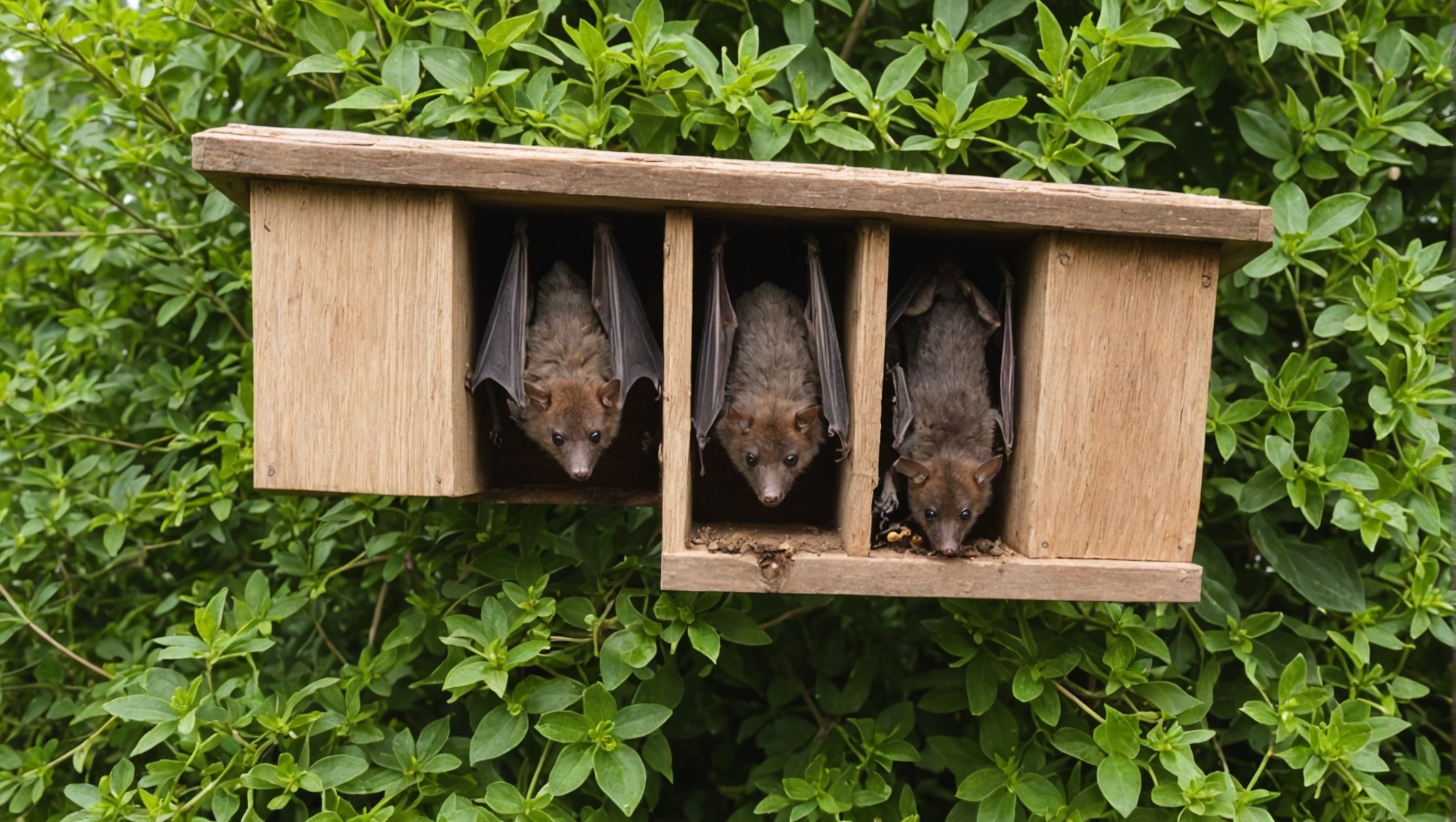Understanding Local Bat Species and Their Needs
Appreciating the diversity of bat species in the UK is crucial for their conservation. Common species such as the Pipistrelle, Brown Long-Eared, and Noctule each have distinct requirements for their bat habitat. These nocturnal creatures often dwell in woodlands, caves, and even urban environments. Their choice of habitat largely depends on factors such as temperature, humidity, and the availability of roosting sites.
When it comes to bat conservation, understanding these needs is imperative. Designing effective bat boxes requires careful consideration of the bats’ natural habits and behaviors. For instance, the Pipistrelle prefers snug spaces mimicking cracks and crevices, while the Noctule opts for tree holes. This knowledge directly influences the design and placement of artificial habitats.
A lire aussi : Discovering Cutting-Edge Solutions: How UK Researchers are Tackling Bird Strikes at Wind Farms
Furthermore, the health of bat populations is inherently linked to local environments. A thriving ecosystem, rich with insects and water sources, supports robust bat communities. Healthy woodlands and water bodies not only provide food and shelter but maintain ecological balance. Recognising the symbiotic relationship between bats and their habitats underscores the importance of tailored conservation efforts to safeguard these vital species.
Materials for Constructing Bat Boxes
When designing bat boxes, selecting the right bat box materials is crucial for safety and durability. Using sustainable building techniques can enhance these structures while being kind to the environment. The ideal material is sustainably sourced wood, such as cedar or fsc-certified lumber. These materials not only withstand varying weather conditions but are also safe for bats.
Lire également : Guardians of the Glen: Explore Key Initiatives to Save the Scottish Wildcat from Extinction
Alternatively, considering eco-friendly construction involves using recycled or repurposed materials, like recycled plastic or bamboo. These alternatives can provide durability and extend the lifespan of the bat box without compromising on environmental impact.
Insulation and structural integrity must also be prioritized. Proper insulation ensures that bats remain comfortable during temperature fluctuations, while a well-structured design provides the necessary protection from predators and environmental elements. Ensuring that all joints are secure and utilising non-toxic finishes will maintain the box’s longevity and safety.
By focusing on sustainable and eco-friendly materials, bat boxes can be both effective in providing a safe habitat for bats and beneficial in promoting environmental conservation. Consider these factors carefully when choosing bat box materials to create a robust, long-lasting habitat.
Design Specifications of Bat Boxes
Designing a bat box involves careful consideration of several factors to ensure its effectiveness in attracting and providing shelter for bats. The optimal bat box design should focus on features that appeal to bats and meet their ecological requirements.
Key Design Features
Bat box geometry plays a crucial role, as it should mimic natural roosting spaces. Typically, boxes are constructed from durable materials that offer good insulation while providing a rough interior for bats to grip easily.
Dimensions and Styles
Dimensions vary based on the target species in the UK. For instance, a depth of about 30-50cm and width of 15-20cm often suits pipistrelle bats. Larger species, like the noctule, may require roomier accommodations.
Importance of Ventilation and Drainage
Good ventilation and drainage are essential to maintain a dry and healthy environment inside. Proper air circulation prevents overheating, while drainage holes at the bottom allow moisture to escape. These features help preserve the structural integrity of the bat box and ensure it remains inviting to its inhabitants.
By combining these elements strategically, bat boxes can become successful homes for various bat species, encouraging their habitation and conservation.
Construction Techniques for Bat Boxes
Building a bat box can be a rewarding DIY project, aiding the local ecosystem while engaging your creative side. DIY bat box construction begins with choosing durable materials to withstand weather conditions. Opt for untreated wood to avoid chemicals that can harm bats.
Steps for Bat Box Assembly
-
Gather Necessary Tools: A saw, drill, screwdriver, and clamps are essential. These tools will ensure precision and safety during the assembly.
-
Cut the Wood: Use your saw to cut the panels to the specified dimensions. This step is crucial for ensuring tight fits and sturdy joints.
-
Assembly: Begin by assembling the back and sides, then attach the front panels. Precision in building techniques is vital for the stability of the bat box.
-
Sealing Joints: Use weather-resistant screws or adhesives to secure the panels. This enhances the durability and predator-proofing of the box.
-
Creating a Landing Surface: Roughen the front lower panel or attach a mesh to assist bats in entering.
Safety Tips and Techniques
Always wear protective gear, such as goggles and gloves. Ensure your workspace is well-lit and organised to facilitate safe and efficient construction. By following these steps, you can create a secure habitat for your local bat population.
Ideal Locations for Installing Bat Boxes
Selecting the perfect bat box location can significantly enhance the efficiency of your bat habitat enhancement. To ensure bats thrive, consider factors like sunlight exposure, height, and proximity to food sources and water.
Firstly, installation tips suggest placing bat boxes at least 12 feet above the ground, ideally on buildings or poles. This height provides bats with a safe vantage point, protecting them from predators and ensuring easy access. Avoid areas overly illuminated at night, as bats prefer darker, undisturbed environments.
Proximity to food sources, such as insect-rich areas, is crucial. Bats feed predominantly on insects, so installing your bat box near gardens, water bodies, or wooded areas can ensure they have adequate nourishment. This brings us to water. Bats often travel along watercourses, making these places ideal for bat habitat enhancement.
When mounting, ensure the bat box is securely fixed, using weatherproof materials. The entrance should be clear of obstructions, allowing bats smooth access. Regularly monitor the box, ensuring no parasites or adverse conditions affect its usability. These installation tips help maximise the bat boxes’ habitat benefits, supporting local bat populations effectively.
Relevant UK Wildlife Legislation
Understanding UK wildlife regulations is crucial, particularly when it comes to bat conservation laws. In the UK, bats receive extensive protection under several key legislative acts, primarily the Wildlife and Countryside Act 1981 and the Conservation of Habitats and Species Regulations 2017. These laws prohibit deliberate harm, capture, or disturbance of bats, and also protect their roosting sites.
When undertaking projects like bat box construction and installation, one must adhere to these protective measures. This involves ensuring that your activities do not disrupt bat habitats and are compliant with legal mandates, which can sometimes require obtaining specific licences if work affects bat roosts.
To assist with compliance, numerous resources are available. Organisations such as the Bat Conservation Trust offer guidance on these laws and advice on how to protect bats effectively. Additionally, checking local regulations with environmental agencies ensures you remain informed about any regional wildlife protections that may apply.
By aligning your projects with these guidelines, you contribute to the conservation efforts protecting the bat populations across the UK. This compliance not only safeguards these essential creatures but also supports biodiversity as a whole.
Ecological Benefits of Supporting Bat Populations
Bats play a crucial role in maintaining the balance of ecosystems, serving as natural pest control agents and vital pollinators. As nocturnal insects devourers, they help regulate the populations of pests that would otherwise cause damage to crops and spread diseases. This service alone underscores the substantial ecological impact bats have, reducing reliance on chemical pesticides and fostering healthier agricultural practices.
Moreover, bats contribute significantly to plant pollination, supporting the biodiversity of many ecosystems. Certain plant species rely exclusively on bats for pollination, highlighting the importance of bat conservation in sustaining plant diversity and, by extension, the wildlife that depends on these plants. The cascading benefits of thriving bat populations extend to enhancing the resilience of ecosystems against environmental stressors.
Communities that actively engage in bat conservation efforts enjoy long-term ecological advantages. By providing habitats such as bat boxes, creating awareness, and protecting natural roosting sites, they secure a balanced ecosystem benefiting both humans and wildlife. Embracing these efforts results in healthier, more vibrant environments, rich in biodiversity and offering invaluable ecological impact. Supporting bats, therefore, not only serves as a strategy for environmental stewardship but also bolsters the intrinsic health of our shared planet.
Additional Resources and Support for UK Residents
Navigating the vast landscape of bat conservation can be daunting. In the UK, there’s a wealth of bat conservation resources available to guide and support enthusiasts. Local wildlife organizations offer invaluable support and can help you get started. Common ones include the Bat Conservation Trust, which focuses on education and policy, and smaller regional groups that take on community-based efforts.
For those eager to dive deeper, recommended further reading or visual aids can be beneficial. Books or guides on species identification, habitat creation, and community engagement strategies can provide the crucial know-how for effective on-the-ground initiatives. Visual aids, such as instructional videos on building bat boxes, are often provided by these organizations as resources.
Engaging with your local community can significantly amplify these efforts. Many local wildlife organizations coordinate voluntary activities that range from bat watching events to habitat restoration projects. These initiatives are ideal for community engagement and raise awareness of the crucial role bats play in our ecosystems. Whether you’re a seasoned zoologist or a budding enthusiast, these resources help individuals make informed decisions and implement practical solutions for a thriving bat population in the UK.











